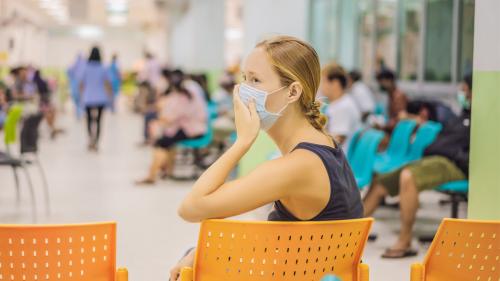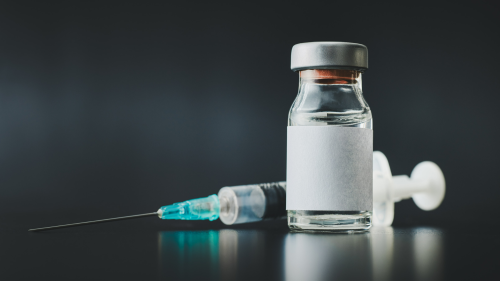
-
Understanding primary immunodeficiency (PI)

Understanding PI
The more you understand about primary immunodeficiency (PI), the better you can live with the disease or support others in your life with PI. Learn more about PI, including the various diagnoses and treatment options.
-
Living with PI
-
Addressing mental health
-
Explaining your diagnosis
- General care
- Get support
- For parents and guardians
-
Managing workplace issues
- Navigating insurance
-
Traveling safely

Living with PI
Living with primary immunodeficiency (PI) can be challenging, but you’re not alone—many people with PI lead full and active lives. With the right support and resources, you can, too.
-
Addressing mental health
-
Get involved

Get involved
Be a hero for those with PI. Change lives by promoting primary immunodeficiency (PI) awareness and taking action in your community through advocacy, donating, volunteering, or fundraising.
-
Advancing research and clinical care
-
Research Grant Program
-
Consulting immunologist
-
Diagnosing PI
-
Getting prior authorization
-
Clinician education
-
Survey research
-
Participating in clinical trials

Advancing research and clinical care
Whether you’re a clinician, researcher, or an individual with primary immunodeficiency (PI), IDF has resources to help you advance the field. Get details on surveys, grants, and clinical trials.
-
Research Grant Program
On May 11, 2023, the federal public health emergency (PHE) for COVID-19, put in place more than three years ago by the Secretary of the U.S. Department of Health and Human Services (HHS), is set to expire. Here’s how a host of policies and rules that were either put in place or relaxed under the PHE will be affected.
What will change
Insurance coverage for COVID-19 tests
When the PHE ends, private insurers will no longer have to cover COVID-19 testing, whether it is done in a laboratory or at home. Many insurers may choose to continue covering these tests but will likely institute copays or coinsurance similar to their coverage for other diagnostic tests. For those on public insurance, Medicare will continue to cover laboratory-based COVID-19 testing at no cost, but not at-home testing; Medicaid will cover all COVID-19 testing at no cost until September 30, 2024.
This means that for Medicare beneficiaries and those with private insurance, including Medicare Advantage, at-home COVID-19 tests will no longer be free when the PHE ends. If you can, stock up on at-home tests now.
Access to COVID-19 tests, vaccines, and treatments for those without insurance
Eighteen states and territories covered COVID-19 tests, vaccines, and treatments for those without insurance under their Medicaid programs during the PHE. When the PHE ends, that coverage ends.
Instead, the Biden administration has launched the HHS Bridge to Access Program. This program allows the CDC to purchase and distribute COVID-19 vaccines to the uninsured and will establish partnerships with commercial pharmacies to provide COVID-19 vaccines and treatments to those who are not insured at no cost. Testing, however, is not covered by this program.
Availability of COVID-19 public health data
The U.S. Centers for Disease Control and Prevention (CDC) will no longer have the authority to require public health and diagnostic laboratories to report COVID-19 test results when the PHE ends. Instead, CDC will rely on hospitals to report hospitalizations and deaths from COVID-19, as they do for the flu.
In general, this means that there will be less public data available to determine local COVID-19 transmission levels. State departments of public health are likely to be better sources of local information since some may still require reporting of COVID-19 test results.
Telehealth
States waived licensure rules for healthcare providers so that they could practice via telehealth across state lines during the PHE. Some states have made those waivers permanent, but in other states, they will expire with the PHE.
Finally, telehealth services will again be restricted to HIPAA-compliant software, which means that providers will no longer be able to use common apps like FaceTime or Skype for telehealth.
End of Medicaid continuous enrollment
During the PHE, state Medicaid plans switched to continuous enrollment to provide those eligible at the beginning of the PHE with stable health coverage during the COVID-19 crisis. While the end of continuous coverage was originally tied to the end of the PHE, in December 2022, Congress passed legislation moving the end of continuous coverage up to March 31, 2023.
This means that states are in the middle of their first non-automatic Medicaid renewal cycle in three years; find out what the renewal process is in your state and if you received Medicaid during the pandemic, verify whether you still qualify or need to seek other insurance.
What will stay the same
FDA authorization of COVID-19 tests, vaccines, and treatments
At the beginning of the PHE, the U.S. Food and Drug Administration (FDA) exercised its ability to issue emergency use authorization (EUA) for COVID-19-related tests and therapeutics in order to fast-track public access to these products. However, the ability to issue EUAs is separate from the PHE itself.
Regarding the end of the PHE, the FDA stated, “Existing emergency use authorizations (EUAs) for products will remain in effect.” This means that, from a regulatory point of view, all COVID-19 tests, vaccines, and treatments that are authorized will continue to be available to the public after May 11.
In addition, FDA will continue to issue new EUAs for COVID-19-related tests and therapeutics that meet its criteria. Continuing this authorization pathway provides a clear and uninterrupted avenue to market for companies who are working on newer diagnostics and therapeutics, such as next-generation monoclonal antibodies.
Insurance coverage for COVID-19 vaccines and treatments
Under the Affordable Care Act, recommended vaccinations, including the COVID-19 vaccine, must be covered by private insurance at no cost to patients. Recommended vaccines are also covered at no cost for Medicare and Medicaid beneficiaries. So, COVID-19 vaccines will continue to be available for free to insured individuals.
COVID-19 therapeutics, such as Paxlovid, have already transitioned to traditional insurance coverage with copays and/or coinsurance because insurers were never mandated to provide them at no cost. However, those covered by Medicaid will continue to have access to COVID-19 treatments at no cost until September 30, 2024.
Prescribing controlled substances via telehealth
The U.S. Drug Enforcement Administration originally planned to end the ability of healthcare providers to prescribe controlled substances, such as Xanax and Adderall, without an in-person visit when the PHE ended. However, the agency received a large number of public comments on that plan and has since submitted a draft rule that would temporarily extend all prescribing flexibilities beyond the end of the PHE. There are no details yet on how long the extension will be or if any of the flexibilities will become permanent, but patients with controlled substance prescriptions do not have to worry about seeing their prescribers in person—yet.
Medicare and telehealth
To ease the burden on healthcare systems and allow people to receive healthcare in low-risk settings, Medicare suspended many telehealth rules during the PHE. Several of them have been uncoupled from the PHE and will continue to be suspended until December 31, 2024. Medicare beneficiaries will still be able to receive telehealth-eligible services:
- At a site of their choosing, including in their home.
- Even if they do not live in rural area.
- In a voice-only format for some services.
IDF is encouraging Congress to make these Medicare telehealth flexibilities permanent because they allow individuals with PI to avoid settings that carry a high risk of infection.
Overall, many policies and regulations that were once tied to the PHE have been uncoupled from it, so there may not be many noticeable changes for the PI community. If there's a PHE-era policy or regulation that's not covered above, Ask IDF.
Related resources
Sign up for updates from IDF
Receive news and helpful resources to your cell phone or inbox. You can change or cancel your subscription at any time.





The Immune Deficiency Foundation improves the diagnosis, treatment, and quality of life for every person affected by primary immunodeficiency.
We foster a community that is connected, engaged, and empowered through advocacy, education, and research.
Combined Charity Campaign | CFC# 66309




